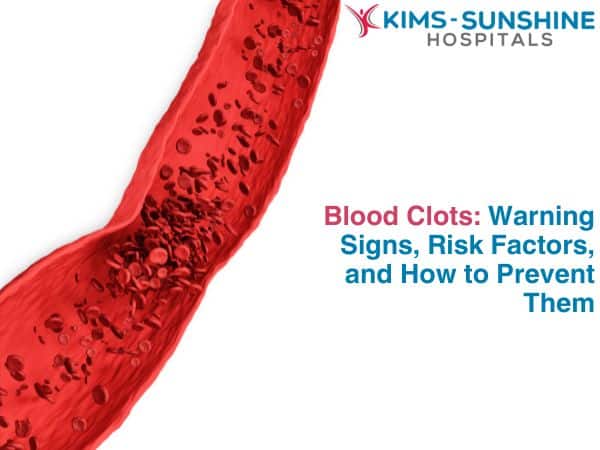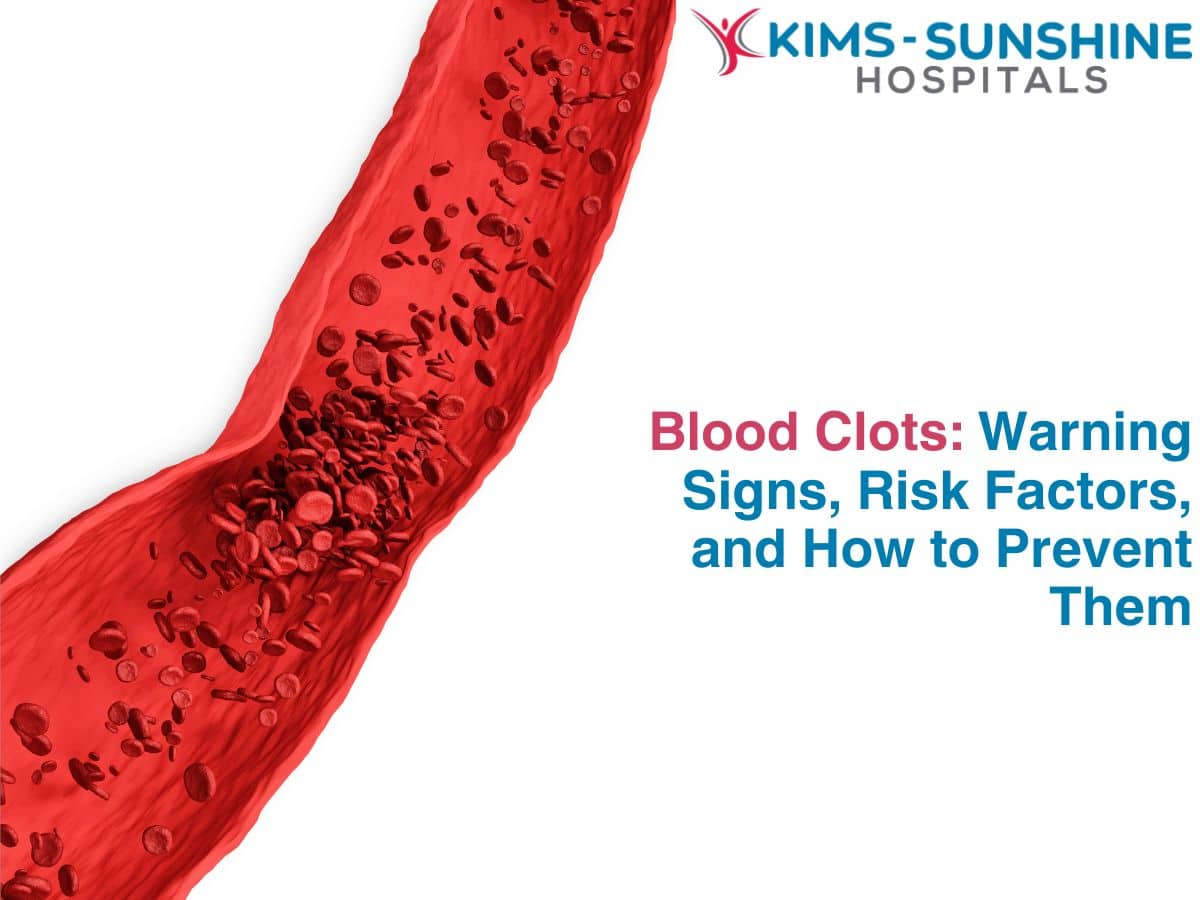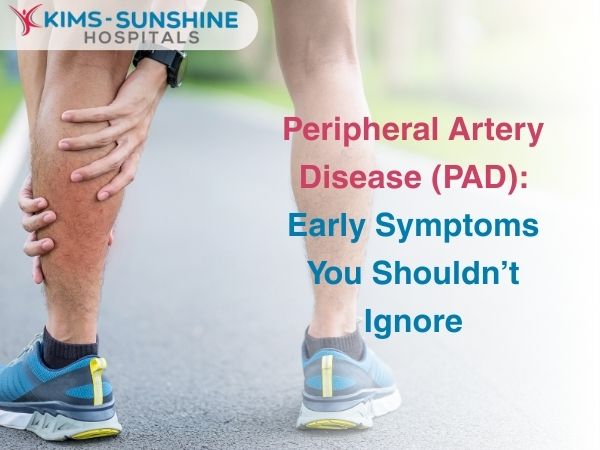
Blood Clots: Warning Signs, Risk Factors, and How to Prevent Them
 A blood clot, also called a thrombus is formed when there is a wound and bleeding needs to be stopped. Clots are formed due to a process called coagulation, using clotting factors- proteins or agents that help blood become a gel-like substance, preventing any unwanted loss of blood. Platelets are the cells involved in this step, along with the immune system working in tandem, to ensure there is no infection that occurs, even when you have a wound afterwards. Since blood clots are normally tiny, they break off when they are no longer needed or they move around and eventually dissolve. But sometimes, they may remain and move to different parts of the body (called emboli). Clots that don’t dissolve or break up are very risky business- especially when you realise what conditions like stroke or a heart attack can do to you.
A blood clot, also called a thrombus is formed when there is a wound and bleeding needs to be stopped. Clots are formed due to a process called coagulation, using clotting factors- proteins or agents that help blood become a gel-like substance, preventing any unwanted loss of blood. Platelets are the cells involved in this step, along with the immune system working in tandem, to ensure there is no infection that occurs, even when you have a wound afterwards. Since blood clots are normally tiny, they break off when they are no longer needed or they move around and eventually dissolve. But sometimes, they may remain and move to different parts of the body (called emboli). Clots that don’t dissolve or break up are very risky business- especially when you realise what conditions like stroke or a heart attack can do to you.
Early Warning Signs Of Blood Clots In Legs And Lungs-
Let us look at some early signs that you need to be aware of, when emboli travel in the body and don’t dissolve, like they should. The symptoms you observe will be different depending on where the blood clot has reached or flown to-
- If it is the brain- you may have vision changes, headaches, dizziness, may not be able to speak coherently, along with weakness in the arms, legs or face- signs reminiscent of a stroke.
- You could have pain in the arms and legs, along with redness, swelling and a warm feeling in the affected limb.
- If it is the lungs- it is called a pulmonary embolism. Here, you won’t be able to breathe normally, may have chest pain and you may also cough up blood, while having a fever.
- If it is the heart- you may notice signs that mimic that of a heart attack- feeling dizzy, chest pain, not being able to breathe and excessive sweating, while feeling uneasy are common symptoms.
- Deep vein thrombosis (DVT) is a related condition, where clots form in veins. Thrombophlebitis is also when there is swelling from a blood clot in a vein.
Who Is At Risk For Developing Dangerous Blood Clots?
The risk of developing clotting disorders is dependent on a number of risk factors, some of which have been outlined below-
- Having faulty genes- which means you will definitely have a clotting disorder, or you may acquire some kind of genetic mutation- which results in the same condition.
- Anyone who is older than 60 is at risk, normally.
- If you have chronic conditions like heart disease, hypertension, diabetes, cancer, or are obese- then you are at higher risk than usual.
- If you have a high amount of oestrogen in your body- due to pregnancy, birth control regimens or with hormone replacement therapy because of menopause- you are at risk too.
- Not moving around at all and staying sedentary for a long time, especially when flying can cause clots- this condition is called deep vein thrombosis.
- If you are a heavy smoker, then this is a risk factor too.
Symptoms Of Deep Vein Thrombosis (DVT) And Pulmonary Embolism-
Let us look at two of the more common issues caused due to blood clots hindering blood flow, below-
- Deep Vein Thrombosis- this condition is observed when a clot is formed in one of the deep veins located in the legs, more often than the arms. They are normally caused when you have faulty genes, are inactive for most of the day, are obese or have polycythemia vera. Not treating a DVT can lead to other complications in the long term like a pulmonary embolism or post-thrombotic syndrome or chronic venous insufficiency- where blood does not flow back to the heart via the veins, but pools in.
- A pulmonary embolism can be caused due to a clot that breaks off elsewhere and flows into the lungs. Some other causes include broken bones leaking fat, tumour cells and air blockage etc.






